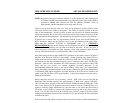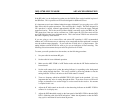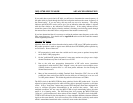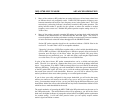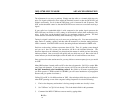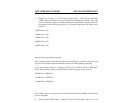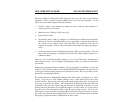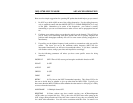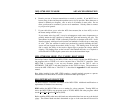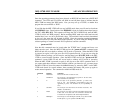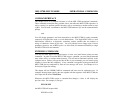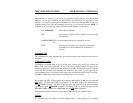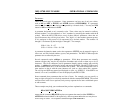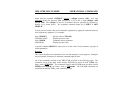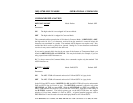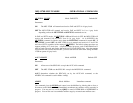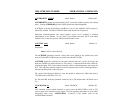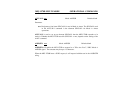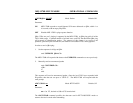
MFJ-1278B MULTI-MODE ADVANCED OPERATION
Once the operating parameters have been selected, set KISS ON and then issue a RESTART
command. The CON and STA LEDs will blink on and off three times to indicate that the
MFJ-1278B has entered the KISS mode. Now you may call up a TCP/IP, or another host
program that can use KISS or "SLIP".
If you find that the MFJ-1278B will not stay in KISS mode, then you will need to deactivate
the KISSDOG timer. Deactivation of the KISSDOG is done by sending these three bytes to
the TNC, $C0, $FD, $C0. This sequence will keep the TNC in KISS mode, until the MFJ-
1278B is told to exit KISS properly. Before enabling KISS, make sure radio baud rate and
terminal baud rate are set to the desired values. The terminal's baud rate that's determined
at sign on is the same that will be used for KISS. Once the operating terminal parameters
have been selected you may enter KISS mode operation. If you are using the KA9Q TCP/IP
software package, to return to normal AX.25 operation, issue the command:
param ax0 255
Note that this command must be issued under the TCP/IP "net>" prompt and lower case
letters must be used. Once the MFJ-1278B receives the "param ax0 255" command, turns
KISS off and will revert back to ordinary AX.25 mode of operation. When the MFJ-1278B
is powered on again, it will sign on to the AX.25 operation mode. If you are not using the
TCP/IP software package, you will need to send the three bytes $C0, $FF, $C0 to the MFJ-
1278B to restore normal operation. Once the MFJ-1278B receives the "param ax0 255"
command, it turns KISS off and will revert back to ordinary AX.25 mode of operation.
When the MFJ-1278B is powered on again, it will sign on to the AX.25 operation mode. If
you cannot send these character values with the software you intend to use, you must power
the MFJ-1278B off, then disconnect the bbRAM battery by removing JMP 5 on the MFJ-
1278B main board for several minutes, then reconnect the battery and power up again to
restore normal operation. The commands available in KISS mode are:
Command Function Comments
0 Data Frame The rest of the frame is data to be sent.
1 TXDELAY The next byte is the transmitter keyup time in 10 mSec units,
with a default of 50 (500 mSec).
2 P The next byte is the persistence parameter, p, scaled to the
range 0- 255. The probability of transmitting at the next
opportunity is p/255. The default is 64 (for a probability of
0.25).
3 Slot Time The next byte is the slot interval in 20 mSec increments. The
default is 10 (100 mSec).
4 TXtail The next byte is the time to hold the transmitter after the FCS
as been sent, in 10 mSec units. The command is obsolete and
is included for completeness with earlier implementations.
5 FullDuplex The next byte is 0 for half-duplex (normal) or any other number
for full duplex (e.g., for operation with MicroStas).



